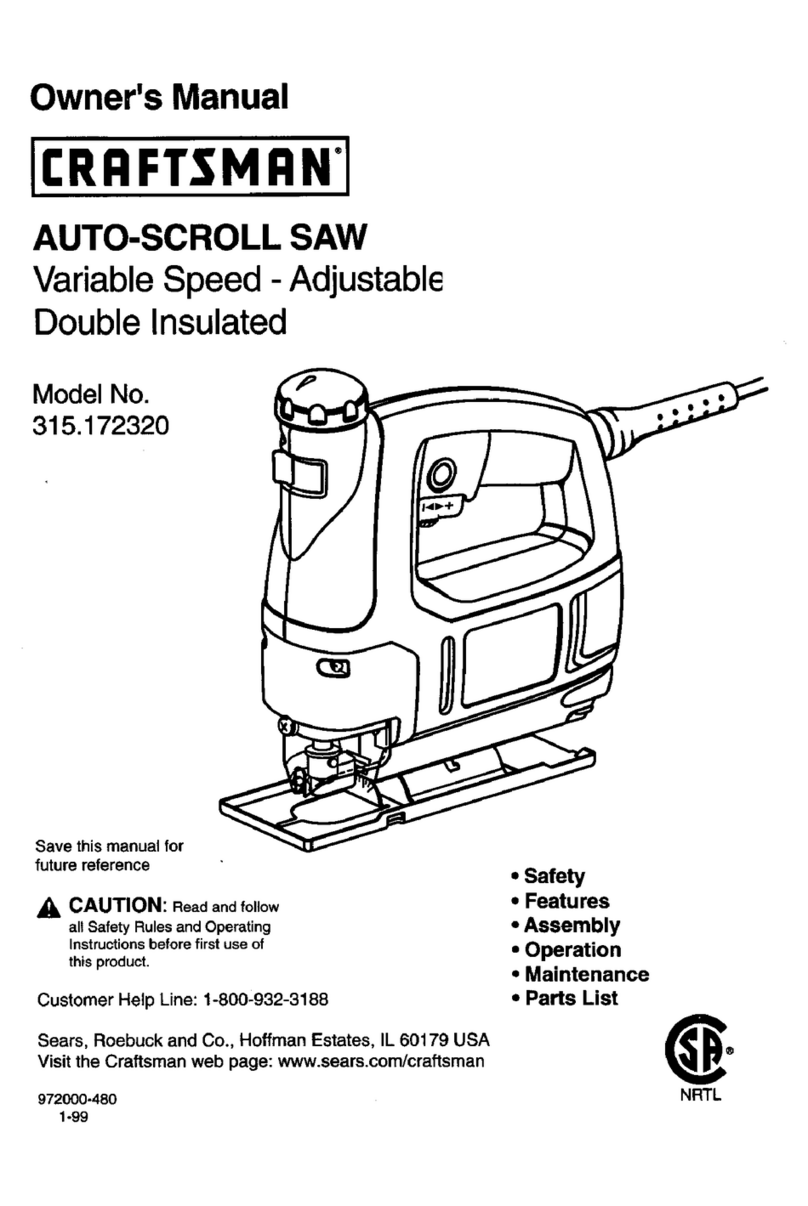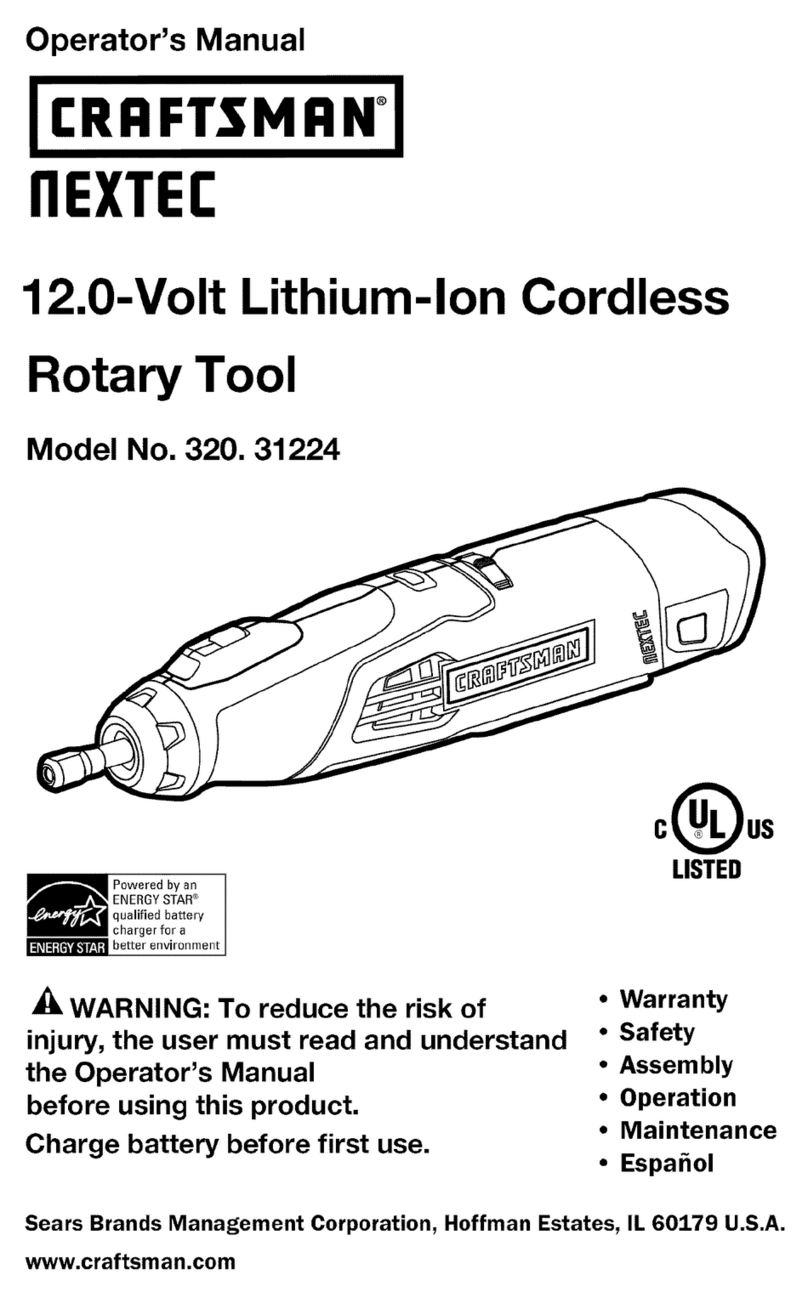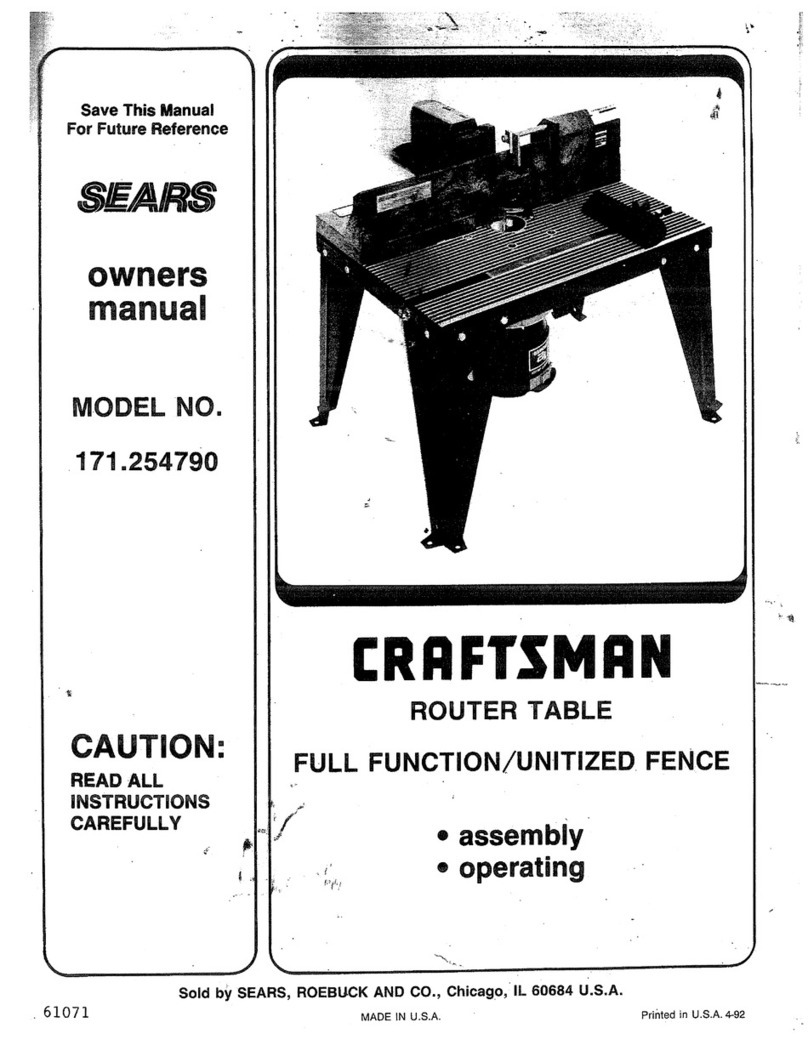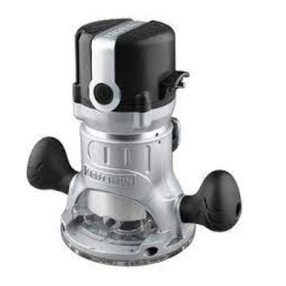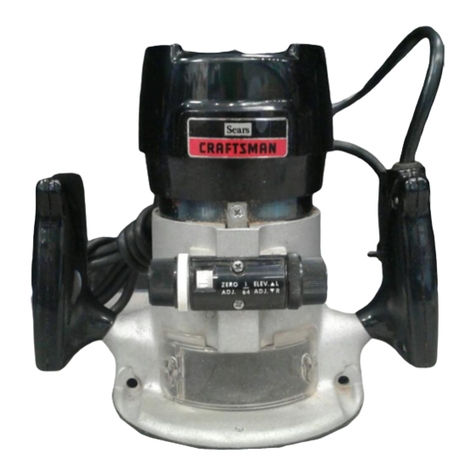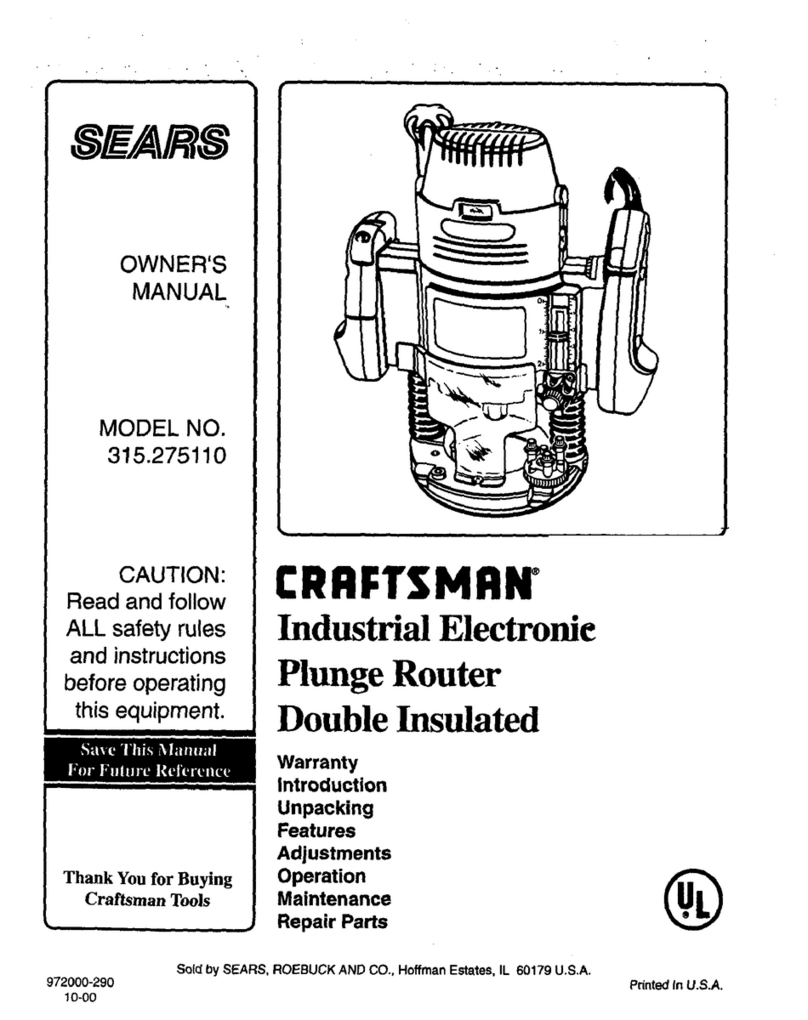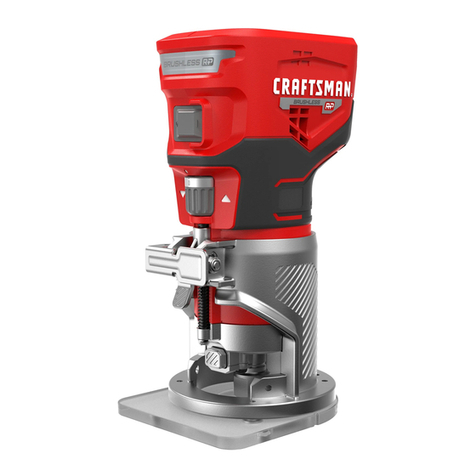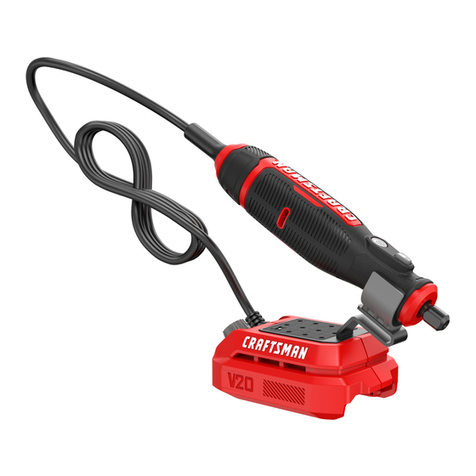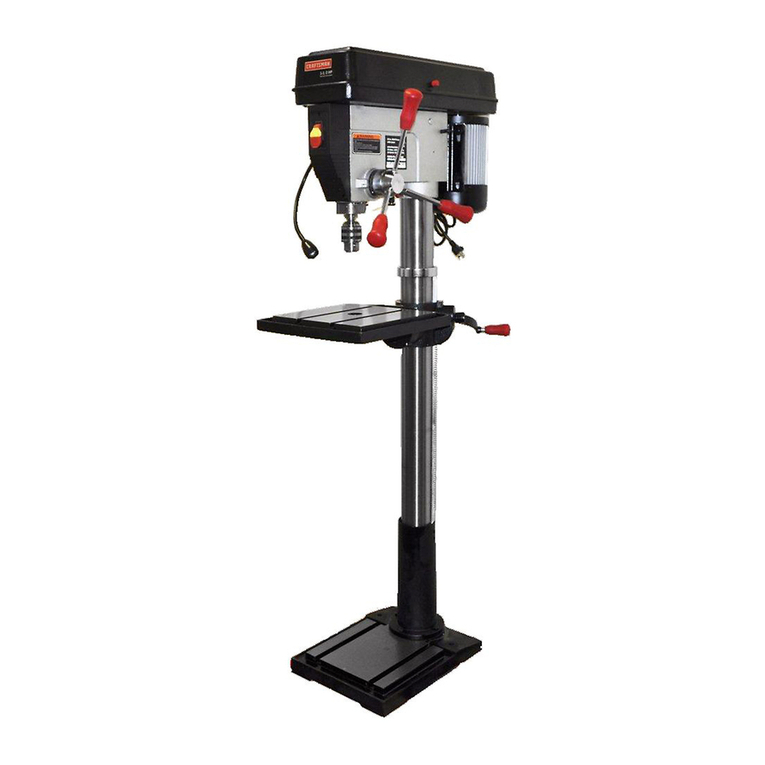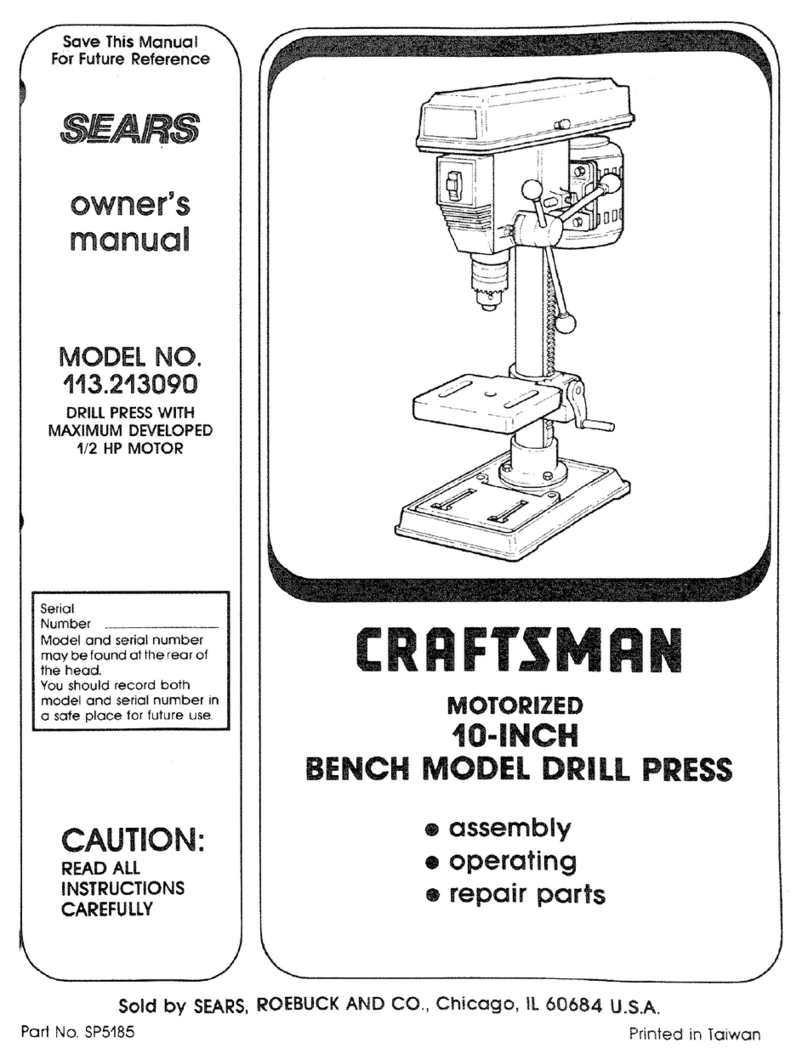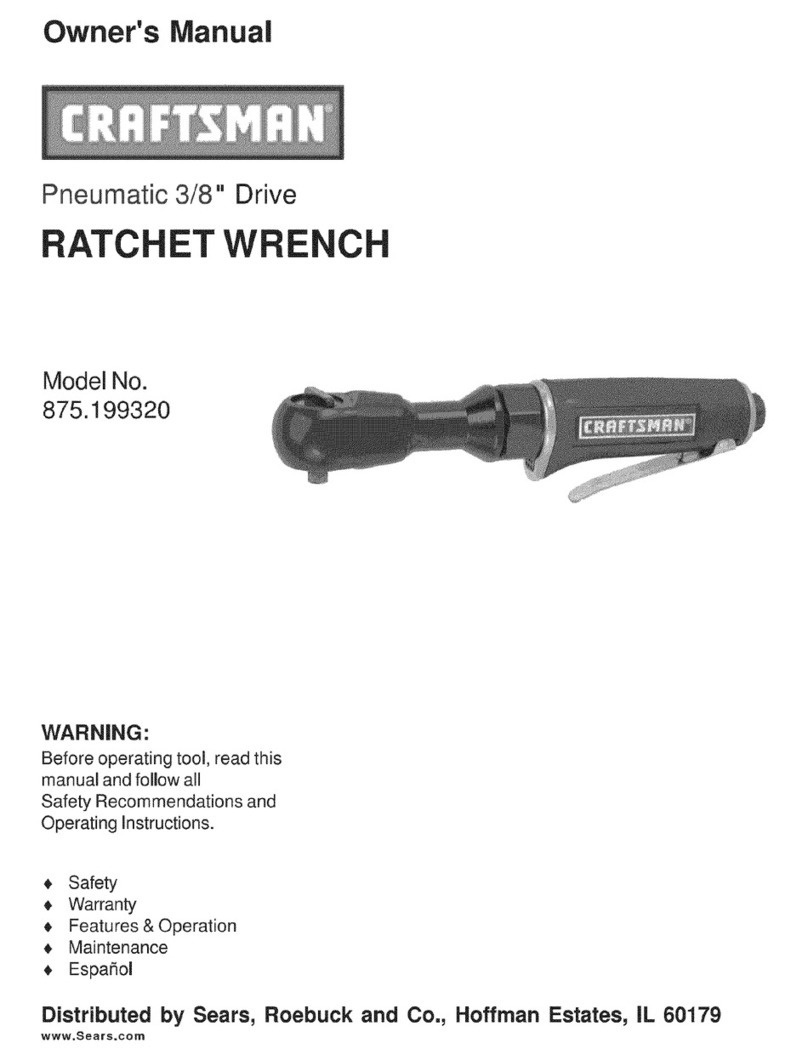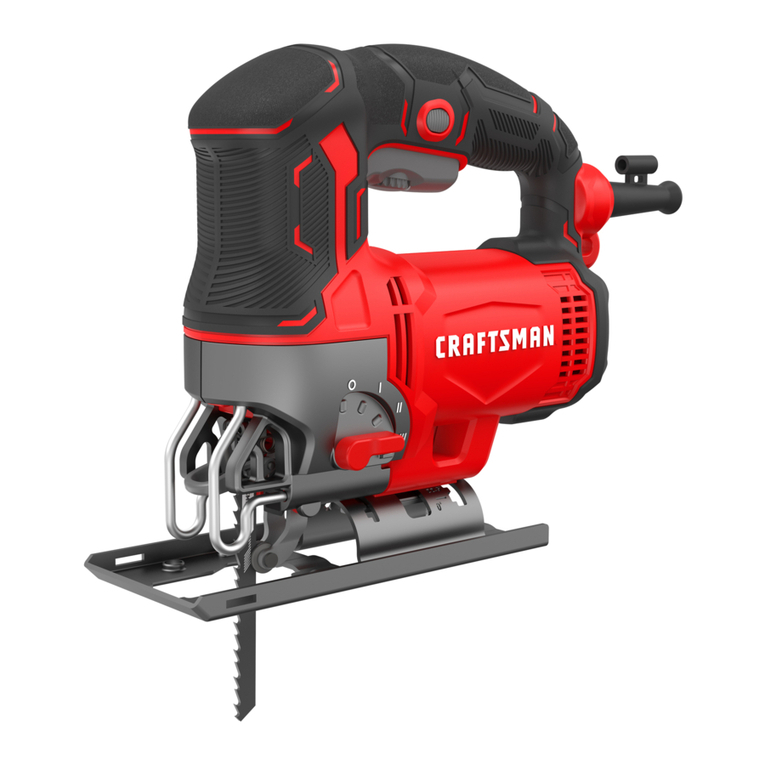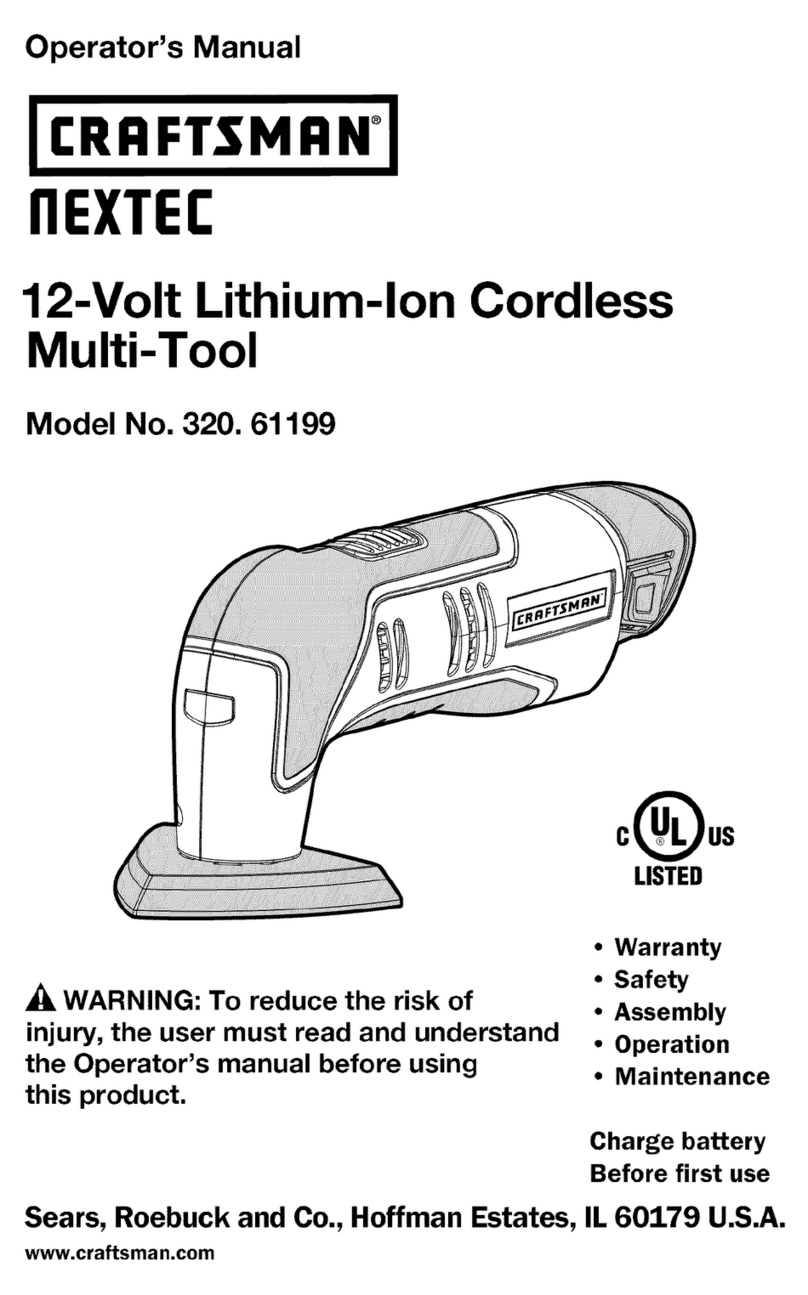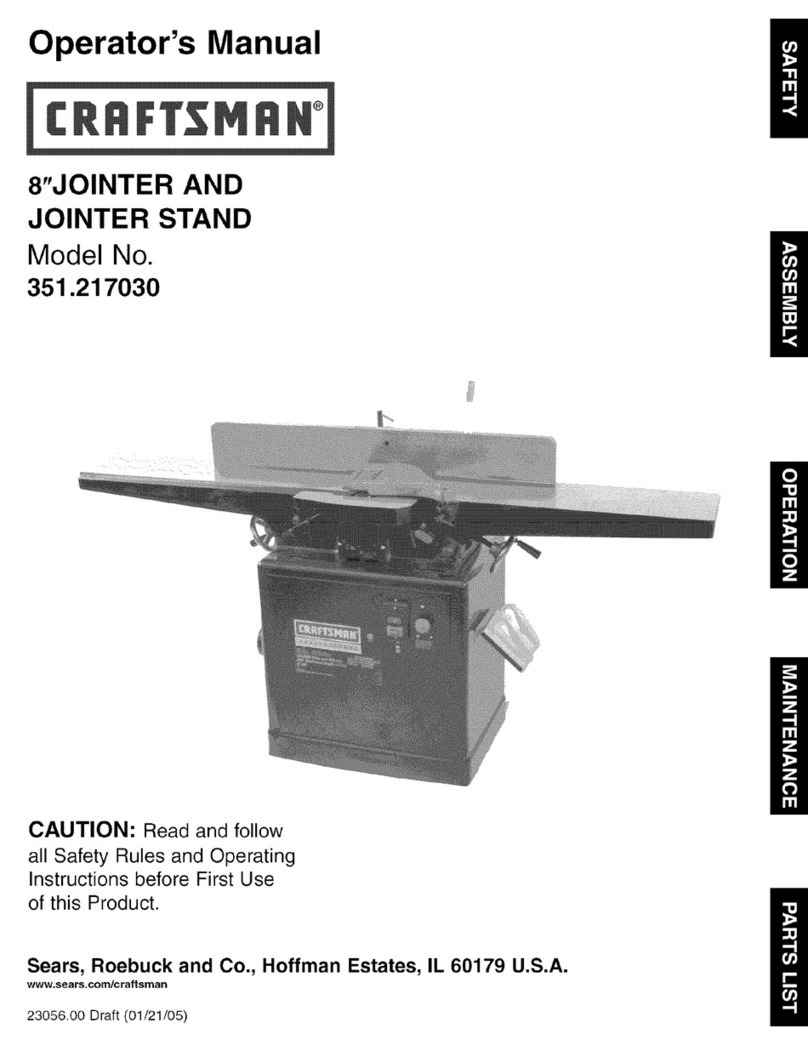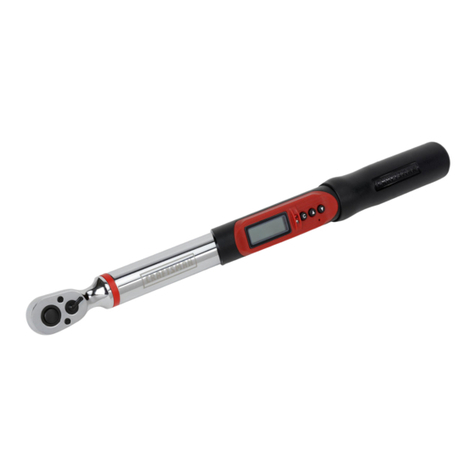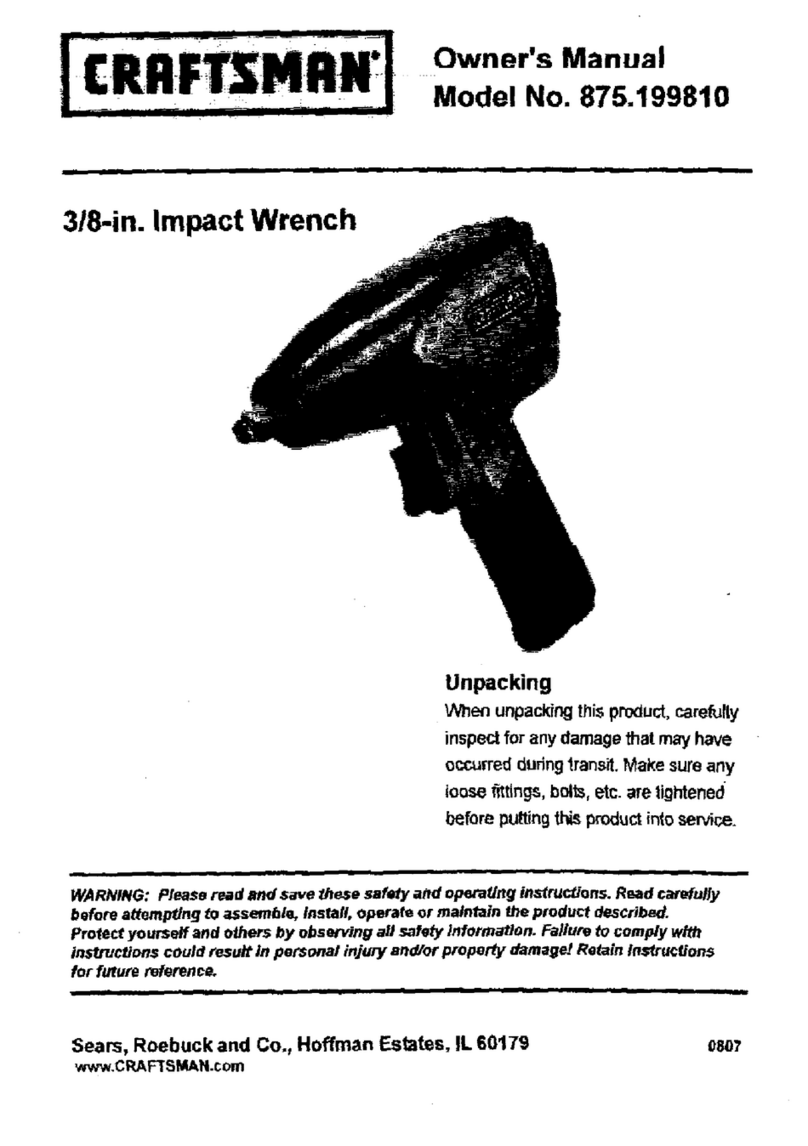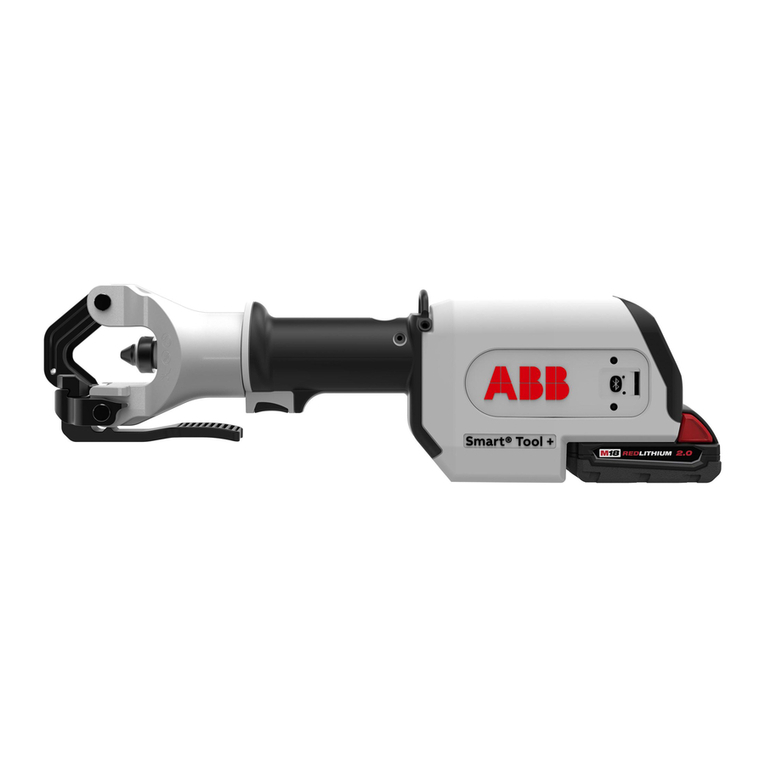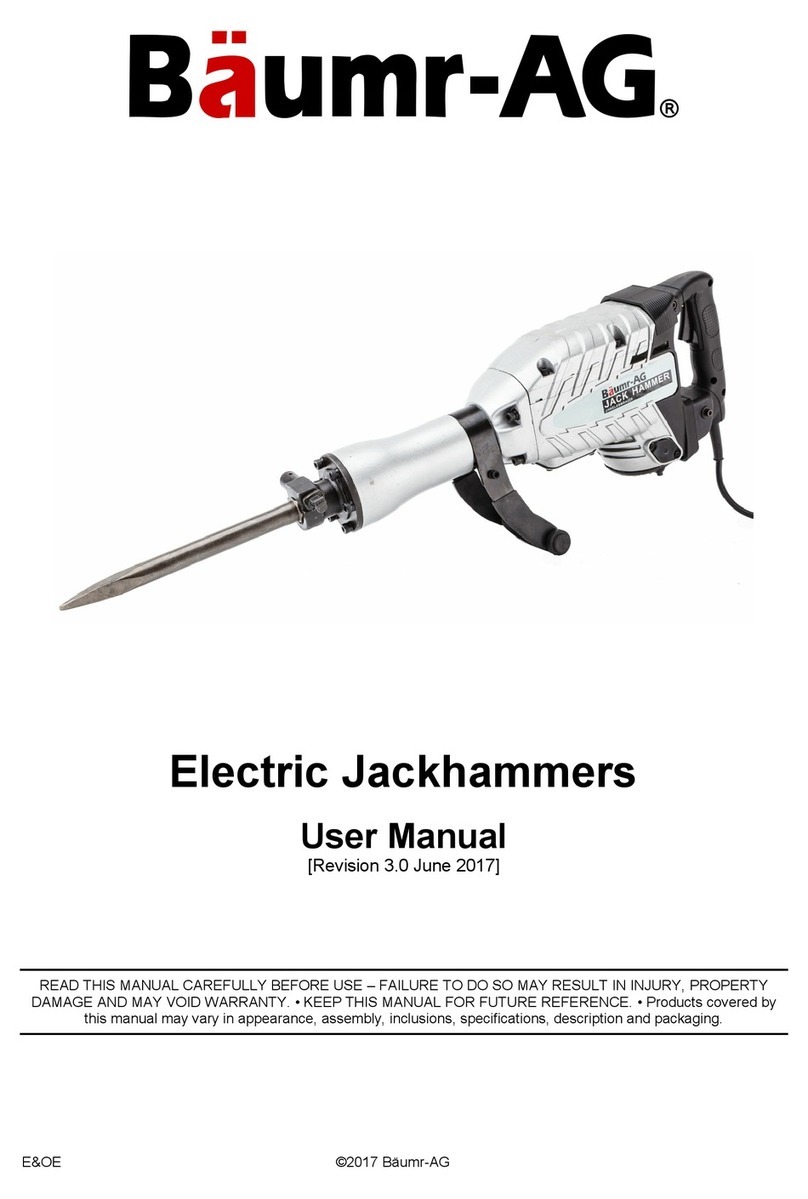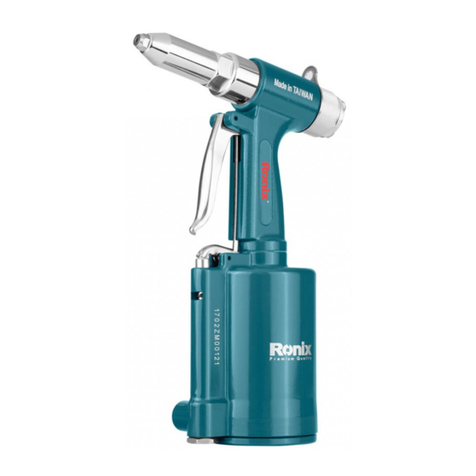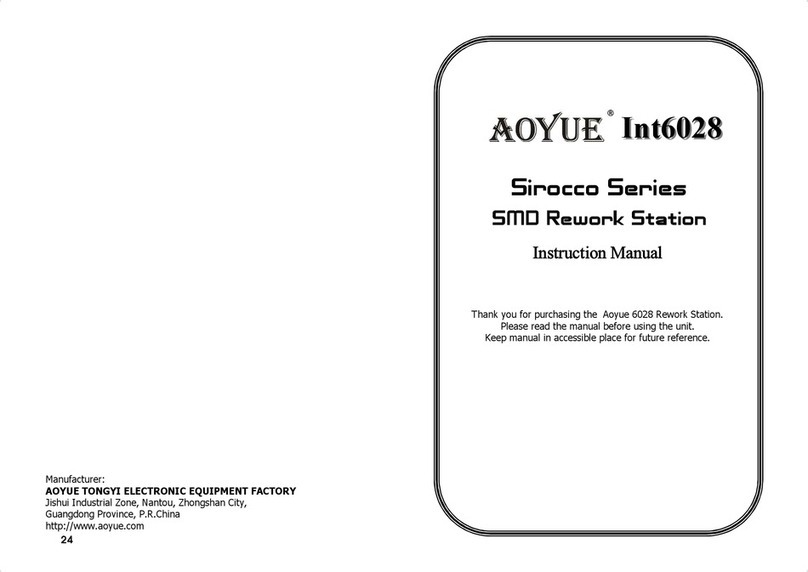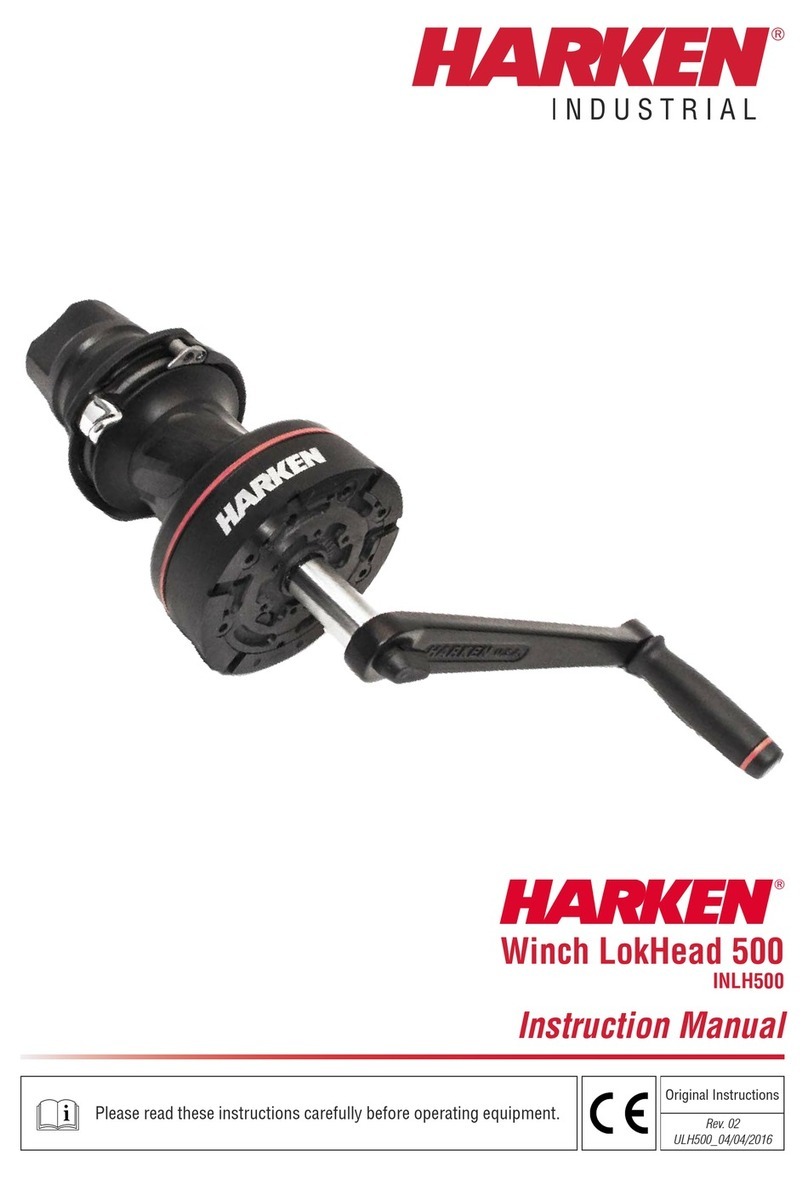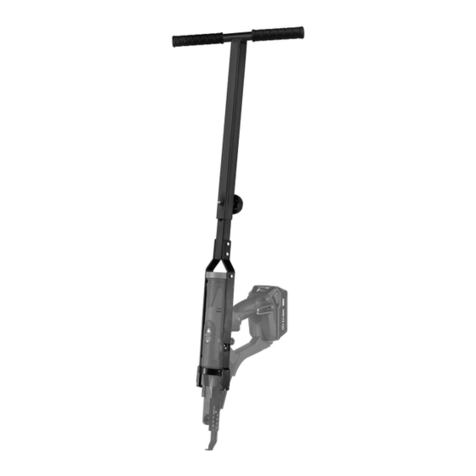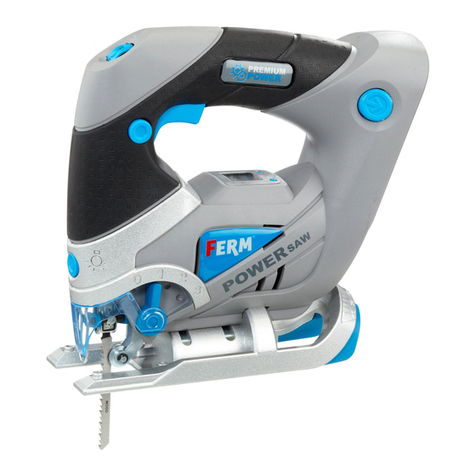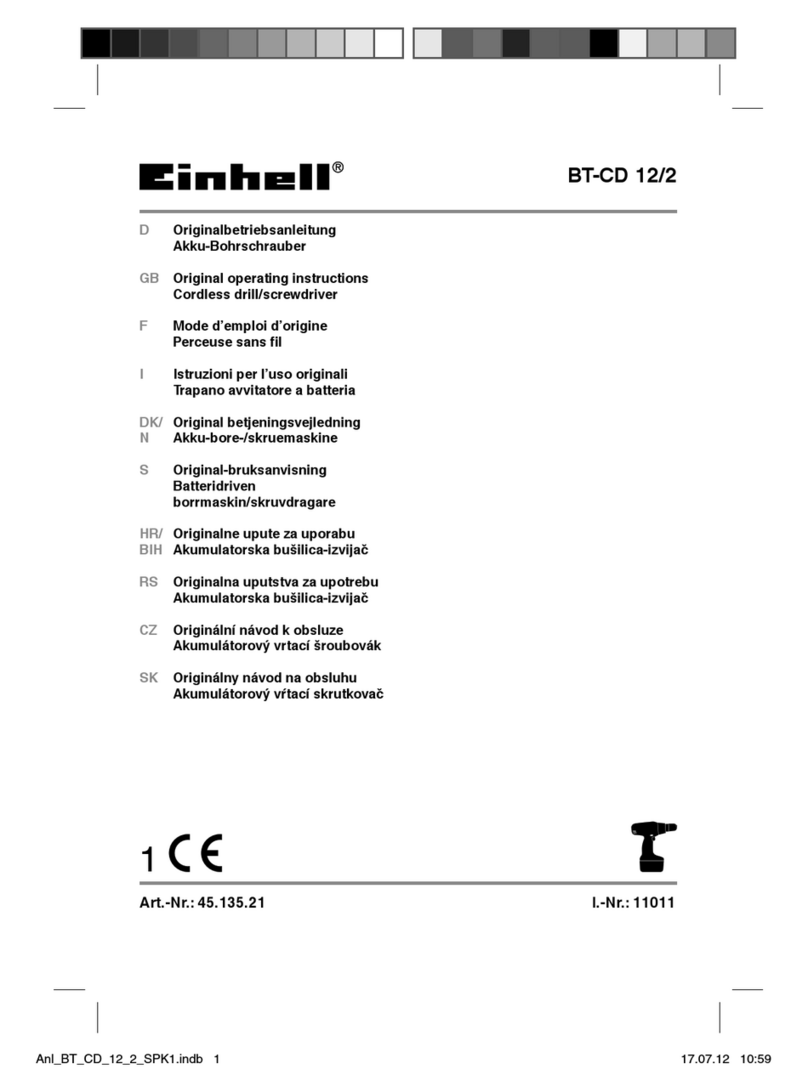
SAFETY RULES FOR SABRE SAWS cont.
7. HOLD TOOL by insulated gripping surfaces (handles) when performing an
operation where the cutting tool may contact hidden wiring or its own cord.
Contact with a "live" wire will make the exposed metal parts of the tool "live" and
shock the operator.
8. SECURE MATERIAL before cutting. Never hold a workpiece in your hand
or across your legs. Small or thin material may flex or vibrate with the blade,
causing loss of control.
9. When ripping, ALWAYS USE a rip fence or straight edge guide. This improves
the accuracy of the cut and reduces the chance of the blade binding.
10. NEVER cut more than one piece at a time. DO NOT STACK more than one
workpiece on the worktable at a time.
11. AVOID awkward operations and hand positions where a sudden slip could
cause your hand to move into the blade.
12. NEVER reach into the cutting path of the blade.
13. BLADE GUIDE ROLLERS must support the blade when cutting. The rollers must
rest against the back edge of blade. THE ONLY cutting operation when rollers DO
NOT support the blade is the scrolling mode. WHEN SCROLLING the blade must
swivel as it is guided to follow scroll patterns. ALWAYS move the base back and
blade guide up and back away from blade in scrolling mode.
WARNING: Use of this tool can generate dust containing chemicals known
to cause cancer, birth defects or other reproductive harm. Some examples of these
chemicals are:
-Lead from lead-based paints.
- Crystalline silica from bricks and cement and other masonry products.
° Arsenic and chromium, from chemically treated lumber.
Your risk from these exposures varies, depending upon how often you do this
type of work. To reduce your exposure to these chemicals:
o Work in a well-ventilated area.
- Work with approved safety equipment, such as those dust masks that are specially
designed to filter out microscopic particles.
Avoid prolonged contact with dust from power sanding, sawing, grinding, drilling
and other construction activities. Wear protective clothing and wash exposed
areas with soap and water.
Allowing dust to get into your mouth, eyes, or lay on the skin may promote absorption
of harmful chemicals.
WARNING: Use of this tool can generate and/or disburse dust, which
may cause serious and permanent respiratory or other injury. Always use
NIOSH/OSHA approved respiratory protection appropriate for the dust
exposure. Direct particles away from face and body.
8
